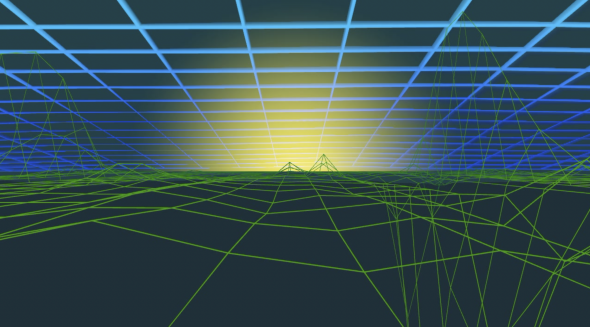Remain in Light
Curated by Field Office
Signals from the surrounding environment – transient personal information from parking lots, restaurants, city streets – are captured in a butterfly net receiver. Output data appear as beautiful clusters of sound-emitting light. Immediate and remote space are both transformed by Haruki Nishijima’s invention of an imaginary ecology.
Artist Statement:
Remain in Light is visual representation of ambient analog sound waves, which have been captured using an "electronic insect-collecting kit." The process of collecting these waves begins with a person carrying an insect net, which is attached to a device designed to capture the waves. The net functions as an antenna, for catching and accumulating radio-wave data.
Today, it is possible to get a lot of information instantly from great distances without physically moving around. Tune and place move, but have no relationship to the body. Invisible data that we can’t see revolves in space and does not appear to be special because we can't see it.
This work converts bits of analog communication data, allowing the viewer to participate in the work by controlling the amount of "time," "air space" and "place" in his/her viewing space. The viewer can see the results of the three processes, which were used to capture these "electronic insects." The first is discovering the "electronic insect," the second is capturing the "insect," and the third is converting the analog data and presenting it visually in an interactive environment.
In the past, our world was filled with natural insects. However, in our modem society, there are fewer natural insects, and they have been replaced by "electronic insects," or bits of sound data. In the city, there are numerous opportunities to collect these "electronic insects," but in the countryside there are fewer opportunities to collect them because there are fewer man-made sounds.
To discover and capture these "electronic insects," first we have to look for them in their natural habitat. Clues are necessary in order to find and "capture" them. For example, I select the habitat of a residential area on the basis of places where cars are parked, where there are fragrances coming from dining tables in a home, and the day and time when I'm in the area. These situations lead to and produce certain sounds. However, when I am in a city, I find situations and places that produce very different sounds. I have tried to capture these sounds on the basis of this information.
The viewer will understand that this interactive space is his/her visible environment – a replication of the world outside. This is a modern version of insect collecting. The "electronic insects" are collected with a net that has been built beforehand and is similar to those used to capture fireflies. The net is made from a cotton cloth, which is often used to cover windows to prevent insects from entering homes. However, my net was designed to bring "insects" inside.
In my interactive presentation, each "electronic insect" is represented by a different colour. Each colour represents one frequency. Some sounds, such as radio data, are easy to capture, and therefore the visual representation of that data's colour will appear more often. I hope that the viewer will notice mat there are a greater amount of data of a certain color, and much less of others – a reflection of the sounds heard in the city. A color chart will be available for viewers to observe.
Will analog data become a thing of the past? Now, most communication data are digitized, and the demand for analog data continues to decrease. Actually, data from analog cellular phones became an extinct species of electronic insect in Japan last year. The quality of analog sound data seems to be inferior to that of digital data, but in fact, our real world is filled with analog sounds. I feel it is important to include both digital and analog data in our lives because it is more representative of the real world. Analog data helps you to remember the past. It is my hope that there will be a continued demand for both analog and digital data and that humans will realize the importance of both technological and non-technological interaction.
Haruki Nishijima, born in 1971, holds a Master of Fine Arts degree in Mural Painting from Tokyo National University of Fine Arts and Music. Since 1999 he has been a student at the International Academy of Media Arts and Science. He has shown his work in several exhibitions mainly in Japan.
Remain in Light is presented at InterAccess as a part of the curated exhibition Flow at the 2002 Images Festival.

Past exhibition
Jul 17 - 20, 2025
VF25 | random access memories―Jackie Liu, Julien Balbontin, Kahani Ploessl, May Yu, Yixuan Shan
The Vector Festival Game Art Residency, curated by Bracy Appeikumoh, supports gamemakers in their development of conceptual video games, investigating video games as time capsules, time machines, and methods of contemporary memory-making.
More

Past exhibition
May 21 - 24, 2025
Magpie Online― Christina Dovolis
Magpie Online is a docu-installation that explores how virtual worldbuilding reshapes identity and connection.
More

Past exhibition
May 1 - 17, 2025
flashDRIVE: Digital Arts Fundraiser Exhibition
Celebrate the opening of InterAccess's new programming space with a survey exhibition of Toronto’s current digital arts scene.